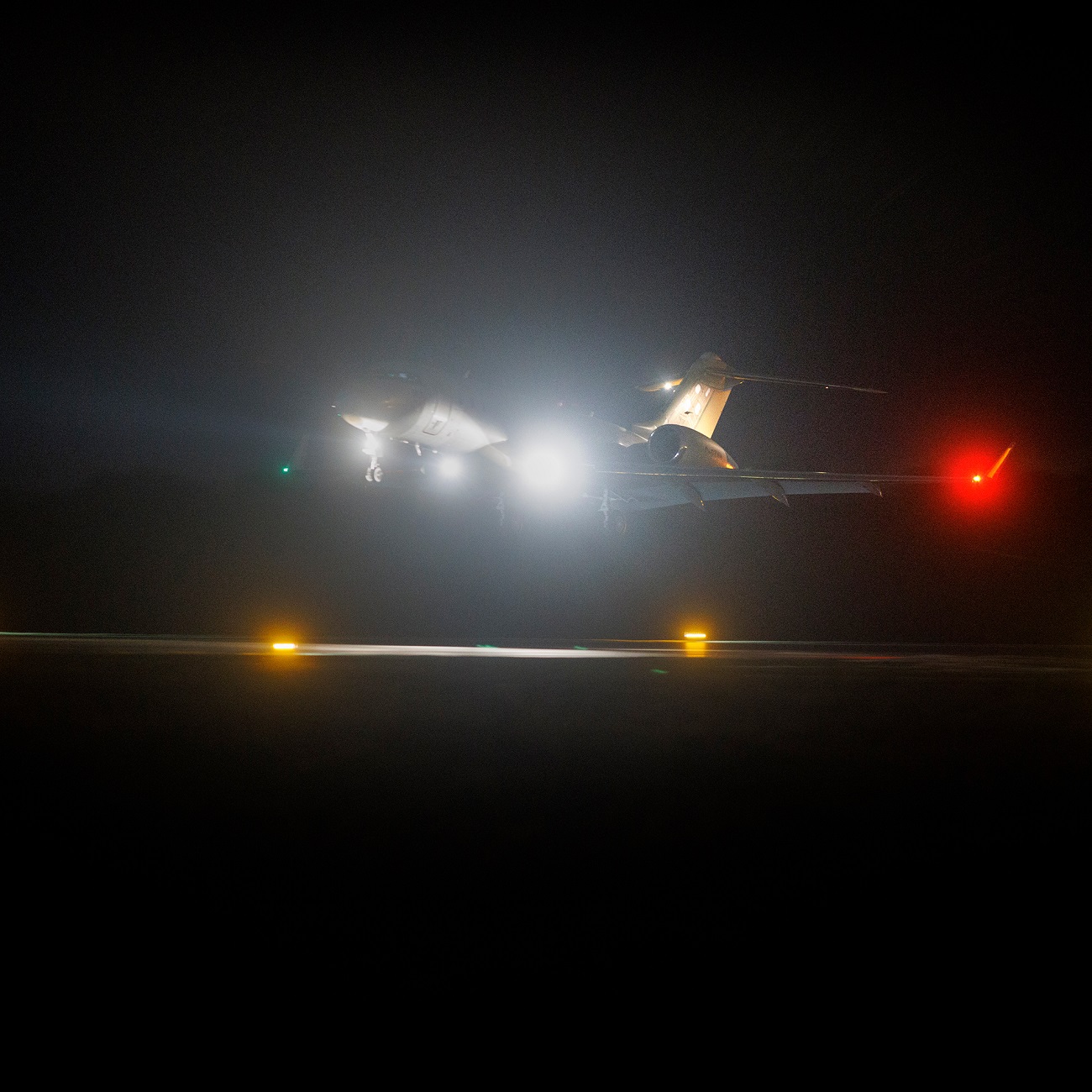The first Swedish Air Force GlobalEye aircraft has touched down on home soil. The acquisition is part of an agreement signed in June 2022 between the Swedish Defence Materiel Administration (FMV) and Saab for the purchase of two surveillance and command aircraft. Designated as S 106 in the Swedish military inventory, these aircraft represent an evolution of Saab’s GlobalEye, tailored to meet the specific needs of Sweden’s defense operations and international collaboration. The initial aircraft to arrive is a Bombardier Global 6000 business jet, slated for transformation into a surveillance and command aircraft equipped with the distinctive radar on its roof. The existing surveillance and command aircraft, denoted as S 100/ASC890, have served various versions within the Swedish Armed Forces since the late 1990s, primarily tasked with monitoring airspace. As these planes are phased out in the coming years, the new S 106 aircraft will take their place.
On 30 June 2022, SAAB and the Swedish Defence Materiel Administration (FMV) signed a contract for the acquisition of 2 GlobalEye aircraft, to be designated S 106 in Swedish service. The deal is valued at 7.3 billion SEK (US$710 million) and deliveries are scheduled for 2027. The contract also includes the option to procure up to 2 additional GlobalEye aircraft. GlobalEye will provide Sweden with world-class airborne early warning and control capability. Saab’s most important mission is to keep people and societies safe, and I am proud that GlobalEye will further strengthen the Swedish Armed Forces’ capability. The Swedish Air Force GlobalEye aircraft can also be used for tasks supporting civilian society, for example by leading and coordinating rescue missions during natural disasters or larger accidents at sea or on land. The capabilities of the S 106, emphasizing its extended range and altitude capabilities compared to its predecessors.

Additionally, the inclusion of advanced systems within the aircraft provides the Swedish Armed Forces with a transformative edge in their operational capabilities. For FMV, the arrival of the first aircraft signifies a transition from the phase of conceptualization and capability planning to the actual construction phase. Schroeter expresses pride in contributing to the enhancement of the Swedish Armed Forces’ capabilities, which are not only sought after by international collaborators but are also aligned with the needs of future NATO allies. Over the next three years, Saab will undertake the task of retrofitting the aircraft to meet the specified configuration. The extensive process of dismantling, replacing, and rebuilding parts of the aircraft. The first Swedish GlobalEye aircraft is expected to take flight in just over two years, followed by a year-long flight testing program.
GlobalEye is a multi-role airborne early warning & control (AEW&C) platform from Swedish defence and security company Saab. GlobalEye consists of a suite of sensors using Saab’s Erieye ER (Extended Range) radar and mission system, installed in the Bombardier Global 6000/6500 long-range business jet. The primary sensor of the GlobalEye is its Erieye ER airborne early warning (AEW) radar; weighing approximately 1 tonne, it is mounted atop the twinjet’s fuselage. Saab has cited up to 450 km (216 nm) range for the AEW radar system when flown at an operating altitude of 30,000 ft; and 550 km at 35,000 ft achieved via the use of new technology, such as gallium nitride transmit/receive modules. The GlobalEye is capable of detecting and tracking a combination of airborne and surface targets, the latter on both land and sea, while mission times of up to eleven hours in duration are possible. In addition to the AEW radar, the GlobalEye is equipped with various additional sensors. These include the Seaspray 7500E maritime surveillance radar, provided by Italian defence conglomerate Leonardo.
The aircraft set to become the next #GlobalEye has landed at our facility in Linköping. This “green” Global 6000 aircraft is supplied by @Bombardier in Canada.”#AEWC #aviation pic.twitter.com/TnCqJvwBXV
— Saab (@Saab) January 26, 2024















